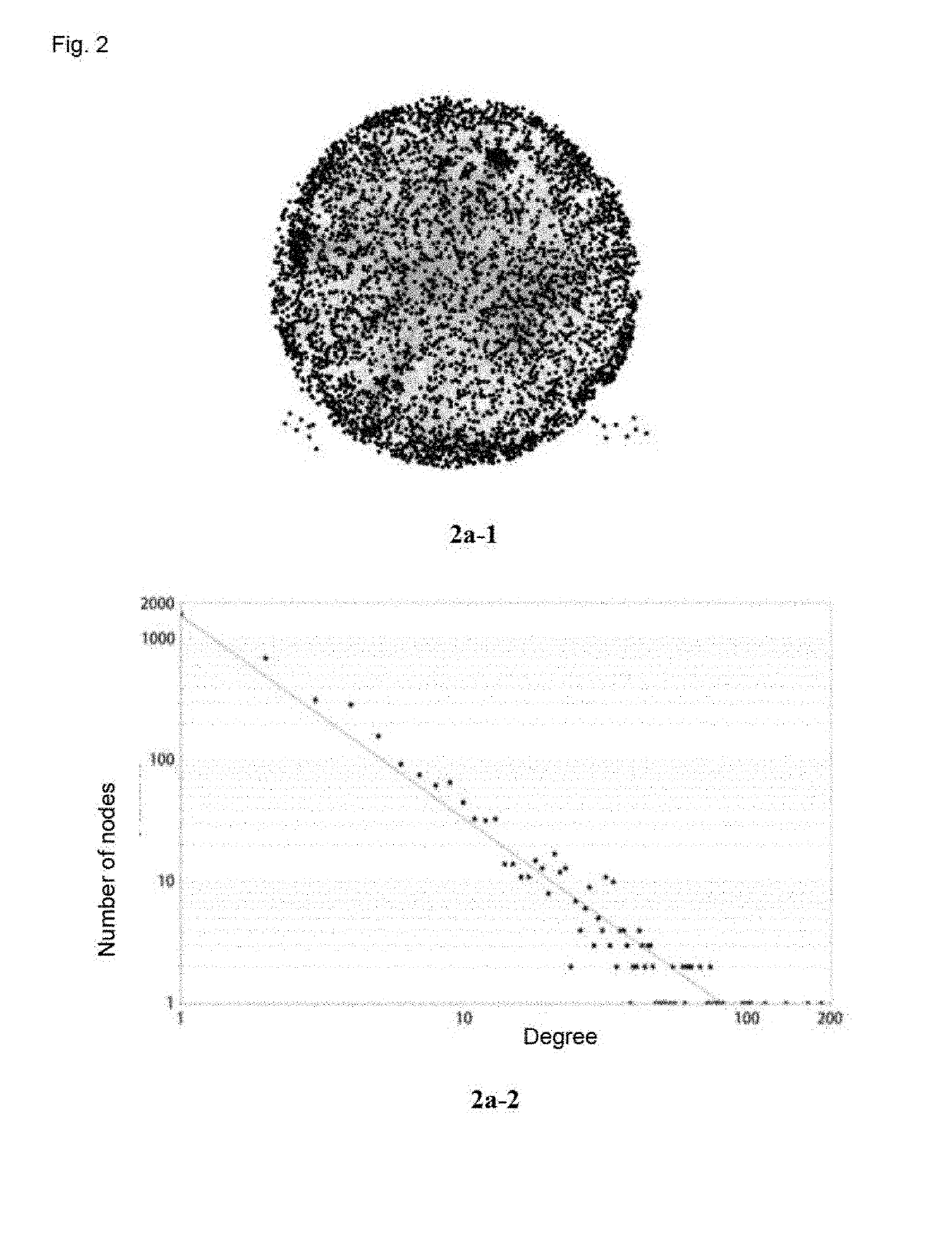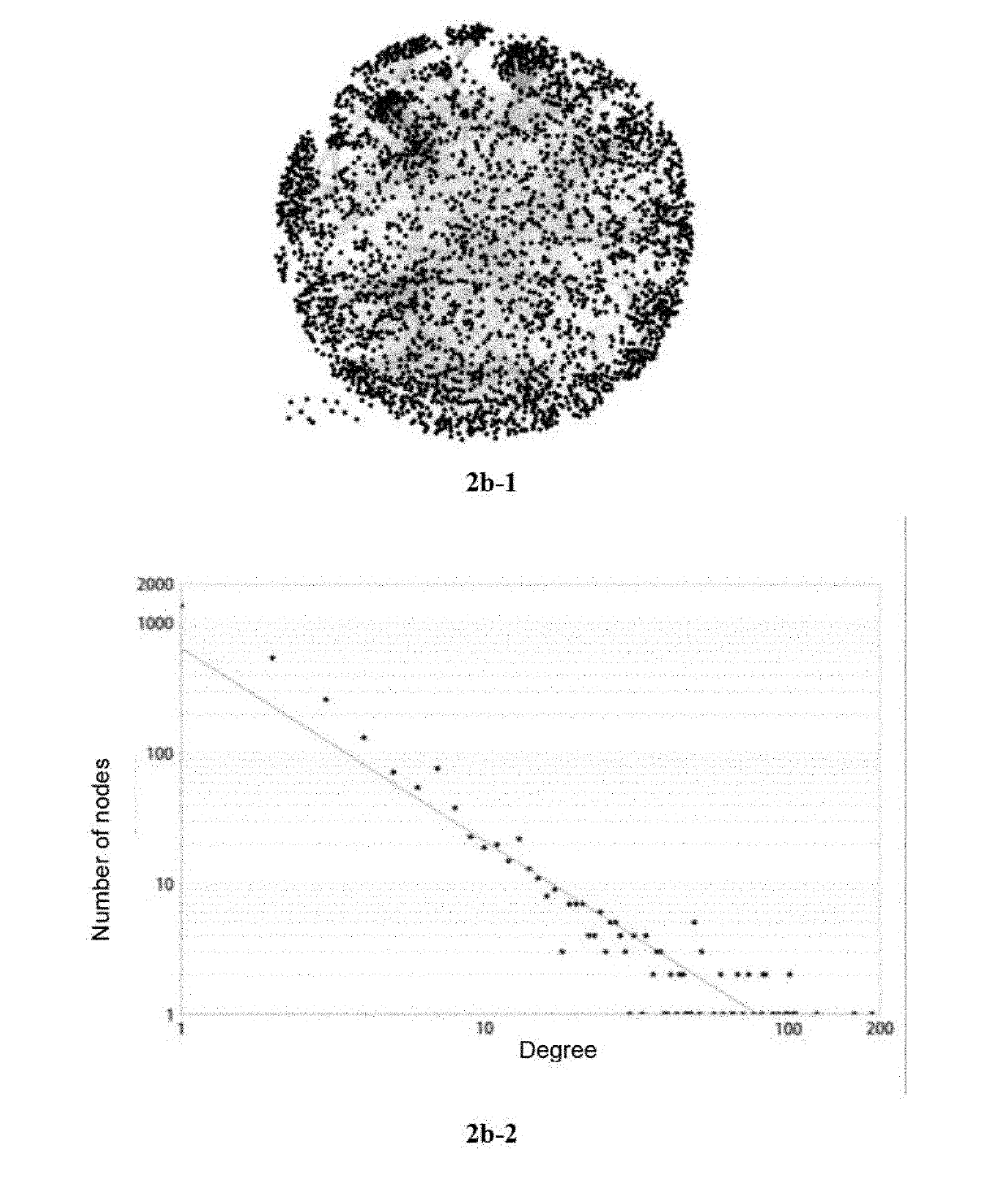Method for identifying key module or key node in biomolecular network
a biomolecular network and key module technology, applied in the field of biochemical information technology, can solve problems such as lack of quantitative analysis of core modules or core nodes
- Summary
- Abstract
- Description
- Claims
- Application Information
AI Technical Summary
Benefits of technology
Problems solved by technology
Method used
Image
Examples
example 1
Identification and Verification of Core Modules
[0057]The protein-protein interaction networks of mouse models of cerebral ischemia intervened with components of Qingkailing were used (FIG. 2; see Yingying ZHANG, Identify and Compare the Core Module from Network of Protein-protein Interation after Different Compound of Qingkailing Treatments on Cerebral Ischemia Models [Doctoral thesis], CHINA ACADEMY CHINESS MEDICAL SCIENCES, 2014):
[0058]Protein-protein interaction network of cerebral ischemia model group (Vehicle group) (panel 2a-1), which was composed of 3750 nodes and 9162 edges.
[0059]Protein-protein interaction network of baicalin group (BA group) (panel 2b-1), which was a protein-protein interaction network obtained by intervening the cerebral ischemia model with the drug baicalin and was composed of 2813 nodes and 6217 edges.
[0060]Protein-protein interaction network of jasminoidin group (JA group) (panel 2c-1), which was a protein-protein interaction network obtained by interv...
example 2
Identification and Verification of Core Modules
[0068]In step 2, unweighted module interaction networks were constructed for the three protein-protein interaction networks (Vehicle group, BA group and JA group) described in Example 1, and then core modules and pharmacological drivers were identified.
[0069]The process was as follows:
[0070]Step 1: Module identifications were conducted on each network using MCODE.
[0071]Step 2: Unweighted module interaction networks were constructed based on component correlations between the modules.
[0072]Step 3: Core modules were identified using three methods including Degree centrality, Betweenness centrality and PageRank that were selected from various methods for measuring node importance; wherein a module was identified as a core module only if the following conditions were satisfied by the module: values obtained by calculating all the modules in the network according to the methods for measuring node importance were ranked in descending order fo...
example 3
Identification and Verification of Core Nodes (i.e. Pharmacological Drivers)
[0075]Three methods of Degree centrality, Betweenness centrality and PageRank were selected to identify core nodes (i.e. pharmacological drivers) in the core module MJA-1, which was identified from the protein-protein interaction network of jasminoidin group in Example 1; wherein a node was identified as a core node only if the following conditions were satisfied by the node: values obtained by calculating all the nodes in the network according to the methods for measuring node importance were ranked in descending order for each method respectively, and (A) at least one value of the node ranked first with one corresponding method; and (B) all the values of the node ranked among the top three with all the other corresponding methods.
[0076]It can be seen through identifying the core module MJA-1 in the protein-protein interaction network of jasminoidin group that primary results obtained by the three methods r...
PUM
 Login to View More
Login to View More Abstract
Description
Claims
Application Information
 Login to View More
Login to View More - R&D
- Intellectual Property
- Life Sciences
- Materials
- Tech Scout
- Unparalleled Data Quality
- Higher Quality Content
- 60% Fewer Hallucinations
Browse by: Latest US Patents, China's latest patents, Technical Efficacy Thesaurus, Application Domain, Technology Topic, Popular Technical Reports.
© 2025 PatSnap. All rights reserved.Legal|Privacy policy|Modern Slavery Act Transparency Statement|Sitemap|About US| Contact US: help@patsnap.com



